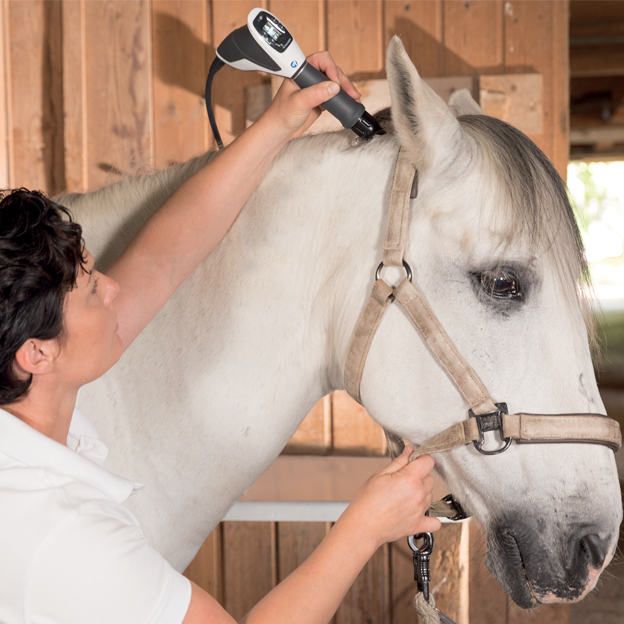Equine Therapy Success Stories: Real People, Real Psychological Changes
Equine Therapy Success Stories: Real People, Real Psychological Changes
Blog Article
Reviewing the Efficiency of Laser Treatment in Horse Therapy for Injury Rehabilitation
The analysis of laser therapy's performance in equine injury rehab hinges on numerous variables, consisting of recuperation time, discomfort reduction, and cells regrowth. Veterinarians often observe superior outcomes with laser treatment contrasted to standard techniques, positioning it as an important aspect in equine treatment.
Comprehending Laser Therapy
Laser therapy has actually ended up being a critical tool in vet medication, especially in the treatment of equine problems. Known for its non-invasive nature and efficacy, laser treatment includes the application of particular wavelengths of light to stimulate cells repair service and decrease swelling. This healing technique is increasingly preferred for its ability to increase the recovery process in steeds struggling with a variety of bone and joint injuries and chronic conditions.
The primary system behind laser therapy is its ability to improve mobile functions. When laser light passes through the skin, it is absorbed by mitochondria, the powerhouse of cells, which brings about enhanced manufacturing of adenosine triphosphate (ATP) This biochemical power boost assists in mobile repair service and regeneration. In addition, laser treatment promotes vasodilation, enhancing blood circulation and oxygen delivery to damaged tissues, hence speeding up healing.
In equine medicine, laser therapy is especially valuable for conditions such as tendonitis, osteoarthritis, and wound healing. The method is lauded for its pain-relieving properties, allowing horses to gain back flexibility and feature more rapidly. Veterinarians also appreciate its minimal negative effects compared to other treatment modalities, making it a reputable and risk-free alternative for equine treatment.

Just How Laser Treatment Works

Upon absorption, these photons trigger a collection of biochemical modifications, enhancing mitochondrial feature and resulting in increased adenosine triphosphate (ATP) production. This surge in ATP speeds up cellular metabolic rate, promoting cells repair service and regeneration. In addition, laser therapy regulates inflammatory reactions by affecting cytokine degrees and decreasing oxidative stress and anxiety, therefore easing pain and swelling.
An additional significant facet of laser therapy is its function in enhancing microcirculation. The treatment promotes vasodilation, enhancing blood circulation and oxygen shipment to broken cells (Equine Therapy). This assists in the elimination of cellular particles and supports the expansion of fibroblasts and collagen synthesis, crucial for wound recovery
Clinical Proof
The efficacy of laser therapy in equine therapy has been corroborated with various medical research studies, showcasing its restorative possible across a variety of problems. Numerous controlled tests and observational researches have recorded substantial improvements in tissue fixing, pain decrease, and general recovery timelines. For example, a research study carried out by Turner et al. (2012) demonstrated that equines treated with low-level laser treatment (LLLT) for ligament injuries exhibited sped up recovery compared to those getting standard therapies. The study highlighted a marked reduction in inflammation and enhanced collagen formation.
Likewise, research study by Johnson and colleagues (2015) focused on equine muscular tissue injuries, exposing that laser therapy substantially sped up muscle mass fiber regeneration and reduced muscular tissue rigidity. These searchings for were corroborated by histological evaluations showing improved muscle mass cells organization. Moreover, medical assessments have actually shown that laser therapy can relieve persistent problems such as osteo arthritis. A study by Smith et al. (2018) reported that steeds with osteoarthritic joints experienced significant pain alleviation and enhanced variety of motion adhering to a program of laser treatment sessions.
Vet Insights

Veterinarians also appreciate the versatility of laser therapy. It can be employed for a large range of problems, from surface injuries to deeper musculoskeletal injuries. Dr. Emily Brown highlights its utility in treating problems like tendonitis and osteo arthritis, where traditional therapies commonly drop short. She directs out that laser therapy can be tailored to the particular needs of each horse, making certain optimum results.
Moreover, veterinarians value the capacity to integrate laser treatment with various other therapy modalities. This multimodal strategy can improve general therapy efficiency, giving a detailed service for equine recovery. Such recommendations from seasoned specialists highlight the expanding acceptance and application of laser therapy in equine medication.
Practical Considerations
A crucial aspect of applying laser treatment in equine treatment entails comprehending the practical factors to consider that ensure its effectiveness and safety. First and leading, it is important to select the proper laser tool, as different kinds differ in wavelength, power, and infiltration deepness. Equine Therapy. Veterinarians have to be well-versed in these criteria to customize treatment procedures effectively to every injury kind
Furthermore, the regularity and period of laser therapy sessions need cautious preparation to make best use of therapeutic benefits while lessening any potential negative results. Consistent monitoring of the equine's feedback to treatment can lead necessary modifications in the treatment routine. Developing a safe and controlled environment during treatments is likewise vital to prevent unintentional exposure to laser discharges, which might hurt Get More Information both the horse and the handler.
Training and accreditation of workers providing laser treatment are vital to make certain correct strategy and to promote safety and security criteria. In addition, keeping exact documents of each session, consisting of laser settings and observed outcomes, is vital for assessing the overall effectiveness of the treatment and for making data-driven choices.
Verdict
Laser treatment has actually become an efficient sites technique in equine injury rehabilitation, offering substantial advantages in recuperation time, discomfort alleviation, and tissue healing. Medical research studies emphasize considerable renovations in problems such as tendonitis and osteo arthritis, associated to enhanced mobile function and boosted ATP production. Veterinarian observations corroborate these searchings for, highlighting superior results contrasted to conventional therapies. For optimum results, continuous surveillance and personalized treatment procedures continue to be vital in leveraging the complete possibility of laser treatment in equine care.
Report this page